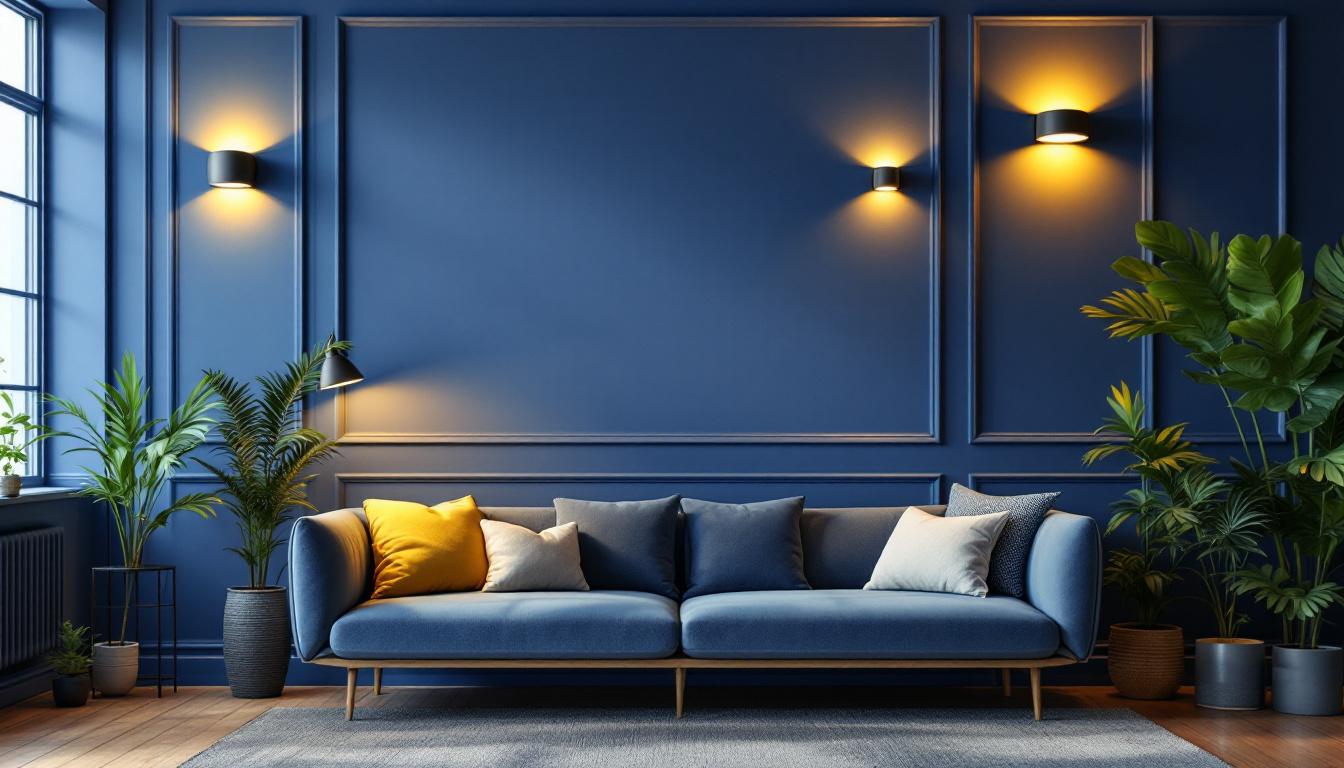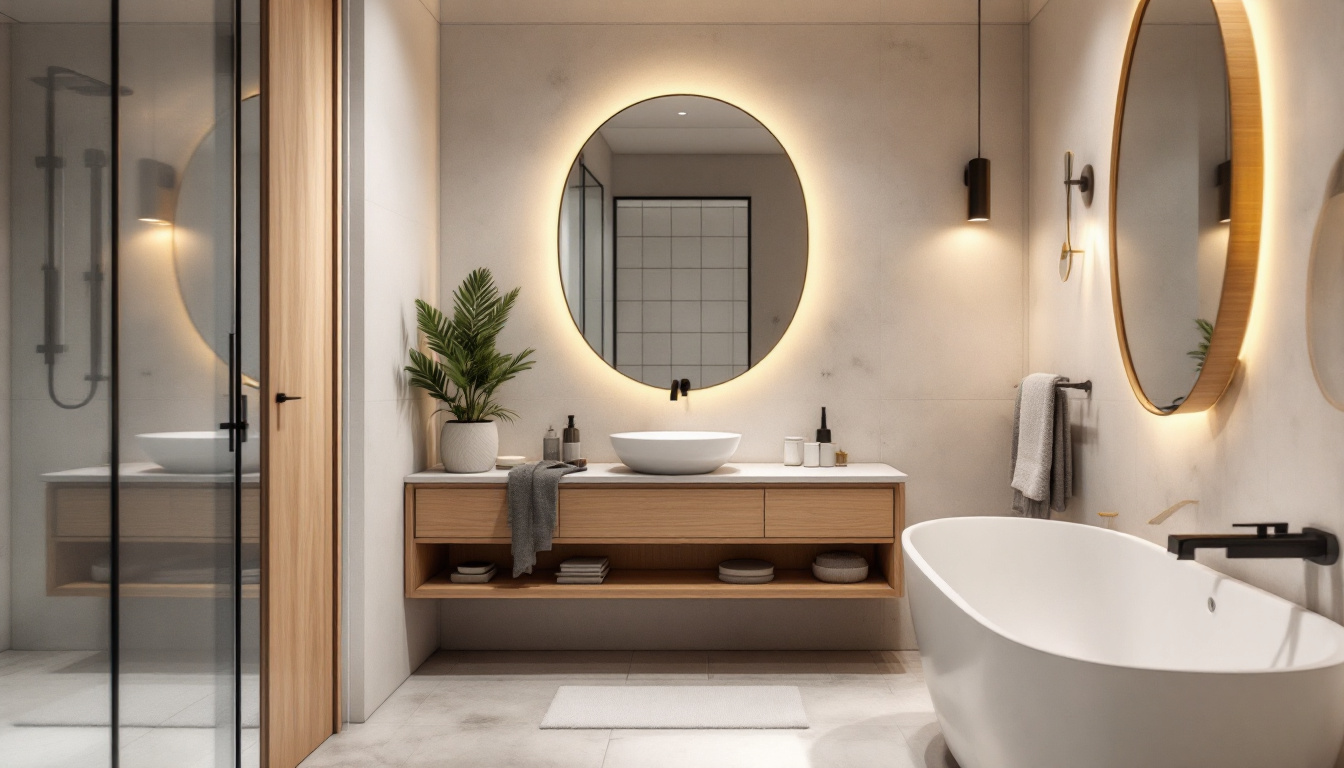
Sconces are a popular lighting choice that can enhance the aesthetic appeal of any space. These fixtures, typically mounted on walls, provide both functional and decorative lighting. For lighting contractors, understanding the various types of sconces and their applications is essential for meeting client needs and preferences.
From traditional candle sconces to modern LED designs, the variety of styles available allows for flexibility in design. Sconces can be used to create ambiance, highlight architectural features, or provide task lighting in specific areas. However, before recommending sconces to clients, it is crucial to weigh their advantages and disadvantages.
One of the most significant advantages of sconces is their ability to save floor space while still providing ample light. This makes them an ideal choice for smaller rooms or areas where floor lamps may be impractical. Additionally, sconces can be strategically placed to draw attention to artwork or other focal points, enhancing the overall decor of a room. The versatility of sconces also extends to their installation; they can be wired into existing electrical systems or used with battery-operated options, providing flexibility for various settings.
Moreover, sconces come in an array of materials and finishes, from sleek metal designs to rustic wooden styles, allowing them to complement any interior design theme. For instance, in a contemporary setting, a minimalist sconce with clean lines can add a touch of sophistication, while in a vintage-inspired space, an ornate, wrought-iron sconce can evoke a sense of charm and history. Furthermore, the growing trend of smart sconces, which can be controlled via mobile apps or voice commands, adds an exciting layer of convenience and modernity, appealing to tech-savvy clients looking to integrate smart home solutions into their living spaces.
One of the most significant advantages of sconces is their versatility in design. They come in numerous styles, materials, and finishes, allowing contractors to find the perfect match for any interior design scheme. Whether a client prefers a rustic, vintage look or a sleek, contemporary aesthetic, there is likely a sconce that fits the bill.
This variety not only helps in meeting client expectations but also provides opportunities for creative installations. Sconces can be arranged in groups, placed at varying heights, or used to draw attention to specific areas, such as artwork or architectural details. This flexibility makes sconces an appealing choice for many lighting projects. Additionally, the ability to mix and match different styles can create a unique and personalized ambiance that reflects the homeowner’s personality. For instance, combining industrial-style sconces with soft, warm lighting can soften a space while still maintaining an edgy look, making it an exciting option for designers looking to push boundaries.
Sconces are an excellent option for spaces where floor space is limited. Unlike floor lamps or table lamps, sconces are mounted on walls, freeing up valuable floor area. This makes them particularly useful in smaller rooms, hallways, or areas where furniture placement is critical.
In addition to their space-saving benefits, sconces can also contribute to a room’s overall lighting design. By using sconces to complement overhead lighting, contractors can create a layered lighting effect that enhances the functionality and aesthetic of the space. Furthermore, sconces can also serve as decorative elements, adding texture and interest to otherwise plain walls. For example, a beautifully crafted sconce can act as a piece of art in itself, drawing the eye and elevating the overall decor. This dual functionality allows homeowners to maximize their design without sacrificing practicality.
With the rise of energy-efficient lighting technologies, many sconces now feature LED options. These fixtures consume significantly less energy than traditional incandescent bulbs, making them a more sustainable choice for clients looking to reduce their energy bills and environmental impact.
Moreover, LED sconces have a longer lifespan, which means less frequent replacements and lower maintenance costs. This aspect can be particularly appealing to clients who prioritize longevity and efficiency in their lighting choices. Additionally, the advancement in LED technology has allowed for a broader range of color temperatures and brightness levels, enabling homeowners to customize their lighting experience further. Whether they desire a warm, inviting glow for cozy evenings or a brighter, cooler light for tasks, LED sconces can cater to these varying needs, making them a smart investment for any home.
While sconces offer numerous benefits, they also come with installation challenges that lighting contractors must consider. Proper placement is crucial to ensure that sconces provide adequate illumination without creating harsh shadows or glare. This often requires careful planning and consideration of the room’s layout and function. For instance, in a narrow hallway, the height and spacing of sconces must be meticulously calculated to avoid casting unwanted shadows that could make the area feel cramped or unwelcoming.
Additionally, some sconces may require hardwiring, which can complicate installation, especially in existing structures. Contractors may need to navigate obstacles such as electrical wiring, wall studs, or other structural elements, which can increase project time and costs. In older homes, the challenge can be even greater, as outdated wiring may not meet current safety standards, necessitating upgrades that further complicate the installation process. This added complexity can deter homeowners from choosing sconces, despite their aesthetic appeal.
Another potential drawback of sconces is their limited light output compared to other lighting fixtures. While they can effectively provide ambient or accent lighting, sconces may not be sufficient as the primary light source in larger spaces or rooms with high ceilings. This limitation necessitates careful consideration of the overall lighting plan to ensure that clients’ needs are met. For example, in a spacious living room, relying solely on sconces could result in dimly lit corners, leading to an uninviting atmosphere.
In situations where sconces are used as the main source of illumination, it may be necessary to incorporate additional lighting solutions, such as ceiling fixtures or floor lamps, to achieve the desired brightness and functionality. Moreover, the placement of these additional sources must be harmonized with the sconces to create a cohesive lighting design. This balancing act can be particularly tricky in open-concept spaces, where the interplay of light from various sources can either enhance or detract from the overall aesthetic.
Like any lighting fixture, sconces require maintenance to keep them looking and functioning their best. Dust and grime can accumulate on the surface, particularly on intricate designs or those made from materials like glass or metal. This may necessitate regular cleaning to maintain their appearance. Homeowners may find themselves needing to invest in specific cleaning products to avoid damaging delicate finishes, which can add to the overall upkeep costs associated with sconces.
Furthermore, if a sconce uses traditional bulbs, replacements will be needed periodically, which can be inconvenient for clients. However, with the increasing popularity of LED sconces, this issue is becoming less prevalent as these bulbs have a longer lifespan. That said, even LED sconces can require attention, particularly if they feature integrated lighting systems that may need professional servicing or replacement when they reach the end of their life cycle. This ongoing maintenance can be a deterrent for some, particularly those who prefer low-maintenance home solutions.
When recommending sconces to clients, it is essential to assess their specific needs and preferences. Understanding the intended use of the space, the desired ambiance, and the overall design style can guide the selection process. For instance, a client looking to create a cozy reading nook may prefer warm-toned sconces with adjustable brightness, while someone aiming to highlight artwork might opt for fixtures with a more focused beam.
Additionally, discussing the practical aspects, such as installation requirements and maintenance, can help set realistic expectations. This level of engagement not only enhances client satisfaction but also positions the contractor as a knowledgeable and reliable partner in the project.
The physical characteristics of the space where sconces will be installed play a significant role in their selection. Factors such as wall height, room size, and existing architectural features should be taken into account. For example, in a room with high ceilings, taller sconces or those with adjustable arms may be more suitable to ensure adequate illumination.
Furthermore, the layout of the room can influence the placement of sconces. In open-concept spaces, sconces can help delineate different areas, while in narrower hallways, they can provide essential lighting without overwhelming the space. Understanding these dynamics allows contractors to make informed recommendations that enhance both functionality and design.
The lighting industry is continually evolving, with new trends and technologies emerging regularly. Staying informed about the latest developments in sconce design, materials, and energy efficiency can provide contractors with a competitive edge. This knowledge allows them to offer clients the most current options, ensuring their projects remain stylish and relevant.
Additionally, attending trade shows, participating in industry forums, and engaging with manufacturers can provide valuable insights into upcoming trends. By being proactive in this regard, contractors can better serve their clients and enhance their own expertise.
In conclusion, sconces can be a valuable addition to any lighting design project, offering versatility, energy efficiency, and aesthetic appeal. However, lighting contractors must also consider the potential challenges associated with installation, light output, and maintenance. By carefully assessing client needs, understanding the space, and staying informed about industry trends, contractors can make informed recommendations that align with their clients’ goals.
Ultimately, the decision to incorporate sconces into a lighting design should be based on a comprehensive understanding of both their advantages and disadvantages. By doing so, lighting contractors can ensure that they provide solutions that not only meet client expectations but also enhance the overall functionality and beauty of the spaces they work in.
Ready to elevate your lighting designs with the perfect sconces? At LumenWholesale, we offer an extensive selection of high-quality, spec-grade lighting options that cater to the unique needs of every space. Enjoy unbeatable wholesale prices and the convenience of bulk buying without the hassle. With free shipping and no hidden fees, you can trust that you’re getting premium lighting at the best value. Enhance your projects with the reliability and performance that only LumenWholesale can provide. Discover our wholesale lighting solutions and make your next installation a shining success.
Discover how Guard Light revolutionizes the workflow of lighting contractors by enhancing efficiency and precision.

Discover the common oversights lighting contractors make with bathroom can lights and learn how to ensure your space is both functional and stylish.

Discover how the most long-lasting solar tree spotlights are revolutionizing lighting contractors’ projects.

Discover how electrical hand tools are revolutionizing modern lighting solutions.